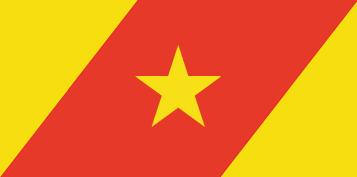
The
State of Amhara

The State of Amhara consists of 10 administrative zones, one special zone, 105 woredas, and 78 urban centres. Amharic is the working language of the state.
CAPITAL CITY
The capital city of the State of Amhara is Bahir-Dar
LOCATION
The Sate of Amhara is located in the north western and north central part of Ethiopia. The State shares common borders with the state of Tigray in the north, Afar in the east, Oromiya in the south, Benishangul/Gumuz in the south west, and the Republic of Sudan in the west.
AREA
The State of Amhara covers an estimated area of 170,752 square kilometres.
POPULATION
According to the 1994 census, the region's population was 13,834,297 of which 6,947,546 were males and 6,886,751 females. The urban residents of the State number 1,265,315 while its rural residents were 12,568,982 (90% of the total population.)
Based on the 1994 census result, of the total population of the State, 81.5% were Orthodox Christians, 18.1% Muslims, and 0.1% Protestants.
Regarding ethnic composition, the majority of the population is Amhara, which is estimated to be 91.2%. In addition, the ethnic composition includes Oromo (3%), Agew/Awi (2.7%), Kimant (1.2%), and Agew/Kamyr (1%).
MAJOR ECONOMIC ACTIVITIES
About 85% of the people are engaged in agriculture. The State is one of the major Teff (staple food) producing areas in the country. Barely, wheat, oil seeds, sorghum, maize, wheat, oats, beans and peas are major crops produced in large quantities.
Cash crops such as cotton, sesame, sunflower, and sugarcane grow in the vast and virgin tract of the region's lowlands. The water resources from Lake Tana and all the rivers found in the region provide immense potential for irrigation development.
About 450,000 hectares of arable land is irrigable and suitable, especially for horticultural development.
TOPOGRAPHY AND CLIMATE
The State of Amhara is topographically divided into two main parts, namely the highlands and lowlands. The highlands are above 1500 meters above sea level and comprise the largest part of the northern and eastern parts of the region. The highlands are also characterized by chains of mountains and plateaus. Ras Dejen (4620 m), the highest peak in the country, Guna (4236 m), Choke (4184m) and Abune – Yousef (4190m) are among the mountain peaks that are located in the highland parts of the region.
The lowland part covers mainly the western and eastern parts with an altitude between 500-1500 meters above sea level. Areas beyond 2,300 meters above sea level fall within the "Dega" climatic Zone, and areas between the 1,500-2,300 meter above sea level contour fall within the "Woina Dega" climatic zone; and areas below 1,500 contour fall within the "Kolla" or hot climatic zones. The Dega, Woina Dega and Kolla parts of the region constitute 25%, 44% and 31% of the total area of the region, respectively.
The annual mean temperature for most parts of the region lies between 15°C-21°C. The State receives the highest percentage (80%) of the total rainfall in the country. The highest rainfall occurs during the summer season, which starts in mid June and ends in early September.
RIVERS AND LAKES
The State of Amhara is divided mainly by three river basins, namely the Abbay, Tekezze and Awash drainage basins. The Blue Nile (Abbay) river is the largest of all covering approximately 172,254 Km2. Its total length to its junction with the white Nile in Khartoum is 1,450 Km, of which 800 km is within Ethiopia. The drainage-basin of the Tekeze river is about 88,800 km2. In addition, Anghereb, Millie, Kessem and Jema are among the major national rivers, which are found in this region.
Tana, the largest lake in Ethiopia is located at centre of the region. It covers an area of 3,6000 km2. Besides, other crater lakes like Zengeni, Gudena Yetilba, Ardibo (75km2) and Logia (35 km2) are small lakes that are found in the region.
The rivers and lakes of the region have immense potential for hydroelectric power generation, irrigation and fishery development.
LIVESTOCK
The estimated livestock population of the region is 9.1 million cattle, 8.4 million sheep and goats, 1.6 million equines, and 8.5 million poultry. About 40% of the livestock population of the country are found in this region. The huge livestock potential of this region gives ample opportunity for meat and milk production, food processing as well as leather and wool production.
FAUNA
Walia ibex, Semien fox, Gelada-baboon, Grey Duiker, Klipspringer, Hyenas and Corocodile are among the twenty-one species (three endemic) that are found in the region, especially at the Semien mountain national park. Wild fowls, Francolins, Pelicans, Cranes, Ibises, and Stocks are among the birds that are found in the region.
MINERALS
The Sate of Amhara has mineral resources such as coal, shell, limestone, lignite, gypsum, gemstone, silica, sulfur and bentonite. Hot springs and mineral water are also found in the region.
TOURISM AND HERITAGE
The 12th century Rock-Hewn churches of Lalibela, and the palaces in Gondar the world known heritages of the country. The traditional mural paintings and hand craft, the preserved corpse of the royalty found in the ancient monasteries in Lake Tana, as well as the Semien mountains national park, which shelters the endemic Walia ibex are spectacular tourist attractions, Three tourist attractions found in the region are registered in the UNESCO list of world heritages. Besides these known heritages, the Blue Nile Falls, the caves and unique stones in northern Showa, and the Merto Le Mariam church are special tourist attractions.
INVESTMENT
Until May 1998, 362 investment projects have been licensed in the State of Amhara. The total amount of capital invested is 2.8 billion Birr. These investment projects will provide employment opportunity for 75,883 persons. Licenses were given in the areas of agriculture, industry, hotel and tourism, real estate commerce and social services. Among the main projects include the steel and brewery factory in Kombolcha.